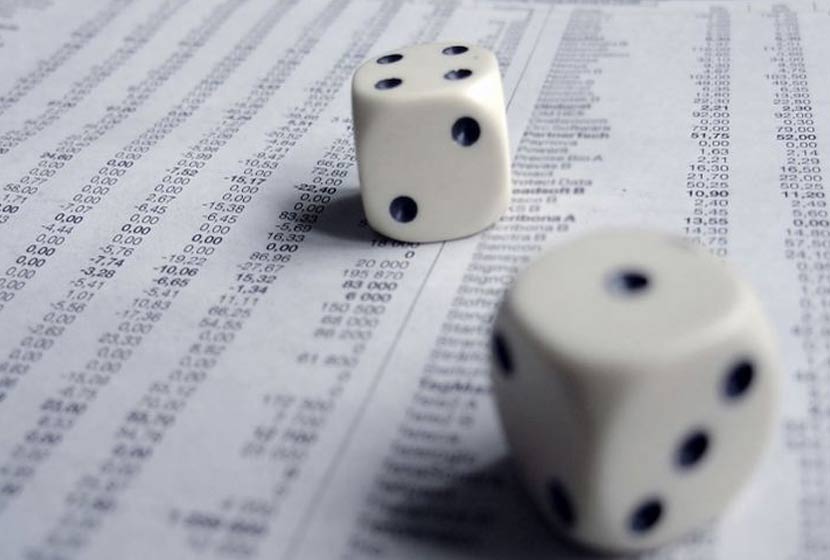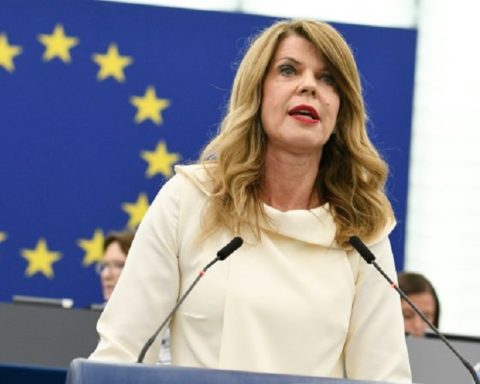The production function of innovation
Scott E. Page is optimistic: one plus one exceeds two. A diversified group has for him the logic of the superadditivity of diverse tools. With 5 different perspectives, we create 10 pairs of perspectives. Add a sixth, 5 new pairs appear, i.e. 5+10+15=30. The author says no more, but it is worth extending the path undertaken by asking how many and what kind of combinations of different perspectives are likely to foster innovation in a mini-group.
Let's do some combinatorics by continuing to consider pairs, i.e. sets {x;y} or {y;x}. These sets are not ordered in the same way as the pairs (x;y) and (y;x) which differ from each other. There are 25 = 32 ways to compose a group of 2 out of 5 people. Each time I choose a first candidate, I have two ways to take a second one. Each time I choose a first and a second one, I have two ways to choose a third one, and so on. Finally, I get: 2.2 2.2 = 25 cases. Since the order doesn't matter, I can calculate the number of combinations p to p of n elements in a group of n elements. Let's consider the constitution of a group as the drawing of balls in an urn. In an urn of 5 balls numbered 1; 2; 3; 4; 5, I randomly draw 2 balls and put them in a box. I have to guess the number of the balls that are inside. The number of possibilities is C25= (5.4)/(2.1) = 10 combinations of balls. The number of combinations of 5 balls 3 by 3 equals C35=(5.4.3)/(3.2.1)=10 balls. The number of 5-ball combinations 4 by 4 to C45=(5.4.3.2)/(4.3.2.1)= 5 balls, i.e. C05+ C15+ C25+ C35+ C45+ C55= 1+5+10+10+5+1 = 32= 25 observing that 2n = Σ Cpn, p ranging from 0 to n and Cpn = Cn-p n (e.g. C45 =C15). We find the combinations advanced by Scott E. Page, including C26=(6.5)/(2.1) =15.
Such a count gives little idea of the variety of encounters in a group. It is not enough to simply count the possible encounters. The order of arrival in the group counts! Let's take our group of 5 and consider a subgroup of 3. Question: How many ordered subgroups of 3 in a group of 5? The question is equivalent to the question: how many thirds are there in order? As first come, there are five possible cases (each of the five horses). Each time the first one is chosen, there are four horses left as the second in the finish. Each time the first and second are chosen, there are three horses left as third finishers. The number of tierces in order is 5.4.3.=60 (60 arrangements). Formally, the number of arrangements of p objects taken from among n is Apn = n(n-1)(n-2) . (n-p+1). If the number p objects is equal to n, we are dealing with a particular arrangement, the permutation. As in an arrangement, permutation is a way to put order by considering all possible orders. According to the previous formula, Ann = n! (ex: the number of permutations of 5 balls in a 5-ball urn is 5.4.3.2.1.=120. There are 120 ways to order 5 elements among 5, i.e. 120 permutations. The number of arrangements is more significant than the number of combinations where the order does not matter. Let's get back to our horses. We had found 60 tierce (60 arrangements). How many combinations? Only 10 combinations, because, for each tierce in the disorder, we find six tierces, i.e. 60/6=10. (In the manuals, it is recalled that Cpn = Apn/p ! ; cf. the ex. above: C 35 = A35/3 ! = (5.4.3)/(3.2) =10.)
Arrangements rather than combinations should be considered if diversity is to be respected. The operation between elements is not associative. If three elements are considered, it is very likely that the fertilization of ideas depends on the order of arrival of the elements in the group : (a*b)*b ≠ a*(b*c) ≠ (a*c) *b. Let Alain and Benjamin be already working on a project. Gilles joins them. The result of their brainstorming would probably have been different if Gilles and Benjamin had been at the beginning together and Alain had joined them. Cross-fertilization varies according to the nature of the elements used in its composition. In order for diversity to play to its full potential, Scott E. Page suggested that there should be no overlap between participants' interpretive models. This should preserve their independence. The author wants to avoid an a priori influence, but this influence cannot be erased during the discussion, the essence of which is interaction! The encounter between different interpretations can be geometrically represented, since these interpretations are assimilated to projections. Although Scott E. Page does not propose it, we can imagine it as follows, assuming that the problem under discussion among participants is a curved space (a "variety"). Each participant's perspective on the issue could be the projection of this variety onto sub-varieties. These points of view could be preferred directions ("eigenvectors"), planes or even curved surfaces. Their meeting would be at the intersection of these planes, these curved planes or surfaces or curved surfaces such as for example :

Several approaches to differentiation are possible. The topological approach is the simplest: invite your neighbour from the office next door or across the street to discuss a particular topic. The gradient approach is also conceivable if one seeks to increase diversity in a single direction (i.e., people with graduated skills, from degree 1 to the highest; in this configuration, everyone will have a say regardless of their rank in the department). Such approaches remain random (depending on the quality of the neighbourhood) or unproductive (the weight of hierarchy will continue to be felt). It is better to meet in a sports venue or a company choir). If we really want to build a multidimensional think tank, it is important to take into account the participants' past: not only their stock of knowledge, but the diversity of their experiences, their flow, as Deleuze would say, i.e. their career path in the company (the same or different) and more broadly in life. The path points out all kinds of encounters, the ones they have undergone and above all those that were wanted and sought after. Recruiting people who are capable of constantly differentiating themselves in order to progress undeniably increases diversity in its content. The greatest source of innovation is the encounter between people who have questioned their training, their culture, their language, their points of reference, their first or second identity, or even the n-th identity. Their personality is multiple, coherent and contradictory, open to all possibilities at the same time. Their imagination accompanies their understanding without ever being totally subjugated by it.
Let's consider three axes. A vertical axis, which measures creativity by the frequency of new ideas. Two horizontal axes: the first indicates the number of encounters p in a given group n, i.e. Apn, the second the degrees of diversity, also in ascending order (from minimum to maximum diversity among participants with multiple personalities and interests). In this system, the invisible production factor would take the form of a production function of innovation. Two familiar surfaces could be imagined to bring it out of the shadows:
- a two-dimensional Gaussian curve of equation (f(x,y) = e.g. -x2-y2 (left figure) ;
- a representation of the Riemann surface for the complex logarithm (right figure). (21)

The figure on the left suggests that the number of new ideas could result from the number of encounters and the diversity of people interacting with each other. By new ideas, we mean ideas that stand out from the stock of old ideas (e.g., in the case of high-speed trains, the bogie versus the electric motor, or profiling, which allows trains to snake rather than accordion between cars). The peak of new ideas would be concentrated around the average (number of participants neither too high nor too low and average diversity of participants in terms of training and experience). The European Commission currently has 28 Commissioners. Under the Lisbon Treaty (2007), it was decided to appoint one Commissioner per state, i.e. 28 since the entry of Croatia. Some consider that such a number leads to an unproductive decision-making process. At 28, we would be in the zone of diminishing returns for imagining and taking good decisions. A much smaller number of Commissioners would not be sufficiently representative of the States and could bias the results. According to some studies, the optimum number would be around 15 Commissioners. This figure would strike a balance between 1/ excessive heterogeneity (and the lack of coherence and cohesion of the Commission), 2/ excessive homogeneity (and lack of openness to the diversity of States and their national interests), 3/ excessive diversity (and the lack of openness to the diversity of States and their national interests), 4/ excessive diversity (and the lack of openness to the diversity of States and their national interests), and 5/ excessive heterogeneity (and lack of openness to the diversity of States and their national interests). (22).
The intersection of a particular arrangement of people and a given degree of diversity can result in the invention of an idea. From this idea may arise, in the course of discussion, other ideas, close or far apart or contrary. The selected idea is tested, rejected or set aside. The sorting of ideas, whether technical or economic (cost), does not exclude the valorization of those that have resulted in failure. Boldness is never free of flaws. So much the better! Error moves the discussion forward! The process is dynamic. The idea finally retained is operational. The company becomes innovative.
The function on the right illustrates a multiform function. The Riemann surface, associated with Log z, has an infinity of leaves (z is a complex number with several roots) (23). Its equation is quite simple if the complex number is expressed in polar coordinates, but we will retain here less its writing than the fundamental idea that this surface is helical with an infinity of spirals. Let's take a slightly caricatural example. A person, aware of the legal and economic problems of his business, is eager to familiarize himself with foreign experiences in his field. He goes for an internship in a German SME, decides to do a Master's degree in management in the USA and ends up working for a while in international trade in this country or in China. He returns to his own company or a similar one. He returns to his company, but in a more important position (a few levels above, moving from employee to manager or even head of department). His multiple experiences and continuous training have enriched the company's diversity in terms of management, international trade and international law.

Mathematically, it seems difficult to establish a passage between a representation of the innovation process by a Gaussian curve and its representation by a Riemann surface. The complex logarithm is expressed by a polynomial in x and y (it is an algebraic surface), which is not the case of the Gaussian curve, which is an exponential. This is not the case for the Gaussian, which is exponential. The latter could however be approached by a Taylor development. In any case, the link makes sense in the firm. Thanks to the contribution of its employee, the creative process, nourished by interactions, climbs the hill of the Gaussian.

The creation process is built in a series of exchanges between different functions of the company. In this respect, competitiveness appears as a social challenge, wrote Alain d'Iribarne in 1989. It imposes cross-functional cooperationThis could be illustrated by partially intersecting circles (e.g. the intersection of the manufacturing circle, the trade circle and the planning/launching circle to achieve zero defects). Such interdepartmental cooperation does not rule out the possibility of external cooperations with suppliers or subcontractors (24). But more is needed, otherwise the meetings will be too institutionalized or too much money will be poured into the meeting. The catallaxis is also based on a dynamic of mini-groups. The coordination nodes must remain informal or short-lived in structure. How else can we prevent the pratico-inerte is a substitute for open? Relationships can be contractualized on an occasional basis. An example? The medium-sized French company Habia, a producer of wires and cables. The company has been able to bring together industrialists and academic researchers at the various stages of production without inertia:
The first step is to divide all R&D projects into five phases: idea, concept, prototype, industrialization, production. The projects are represented by pellets of varying sizes depending on their size and divided between these five stages, which gives an "aerial view" of the flow of projects and ensures that a balance is maintained between those starting up, those halfway through and those finishing, so that there are always innovations to bring to market.
In order to proceed to the next stage, projects must meet certain conditions, which allows the research team to set the objectives. Every Monday morning, everyone must stick a post-it on a board to explain where they are and what difficulties they are encountering. If the solution is easy, the others help him or her to find it; if it is difficult, the complexity of the problem is highlighted, so as not to lose face. All of these arrangements encourage teamwork and accelerate innovation (25).
Innovation is not just about efficiency (what is effective, how much?). The way the group creates (what is efficient(t) matters just as much. An efficient organization implies three verbs : assess, implement, deliver (26). These verbs imply actions and a conjunction of inventions.
For an unusual revolution
Things are changing, not only in ideas, but in practice if we stick to the private sector. At least in small and medium-sized enterprises. Let me give you another example. : the site Sparknews. This site aims to share reports showing sustainable development actions. Its founder is an agricultural engineer. After completing his studies, he travelled the planet to meet men and women who are helping to move the world forward. On his return, he joined forces with his fellow travellers. Former member of Engineers Without BordersHe was also a teacher and educator of suburban youth. Sparknews defends useful journalism, works with businesses and newsrooms around the world. The company publicizes what works, such as micro-credit or other innovative development ideas. The company does not intend to make a big deal out of just any event as some media do. It creates something new by highlighting what helps people.
The same spirit can be found in large companies. We mentioned Essilor. There are others, but in many of them, the larks-eyed mirror of the grandes écoles restricts innovation by perpetuating situations acquired through degrees at student age. Where are the French companies run by people with field experience or experience, who haven't even finished their studies? Have we ever counted the resounding failures of megalomaniacal overgraduates, admiring only themselves or their peers? Their vanity serves as a guide for them to see nothing. They drive their business into the wall, the market ending up penalizing them less than the staff who were too obedient to them. At best, innovation stagnates, ideas dry up. The result is similar to an employee running out of ideas. The person who used to invent 10 ideas a day is now suggesting only one a month. The creative process dries up and, as a result, promotions within the function dry up. Only the Prince's favourites go up, unless the company's board of directors ejects the CEO in time.

But what about leaders with flair, flair, flair, flair, flair, flair, flair, flair? business acumen and the intelligence of relationships? There is one: Xavier Niel, the only great business leader in France to have stopped his scientific preparation to create a company. Xavier Néel innovated in computer science, creating the free-box. He founded 42, a free school, without any academic pre-requisites, offering a different kind of training in the more talents, even geniuses (sic), so that they are able to design new software and carry out their projects. Xavier Néel does not seek to cut costs in order to be rewarded a hundredfold by shareholders. Nor does he moan like many old-fashioned bosses. More than ever, he continues to invest or even create a business incubator, the Salle Freyssinet in Paris, which will host a thousand start-ups. - With those nuggets of the future, it's rejuvenating the present!
What about the civil service? Civil servants represent, as we proclaim in France, the general interest. This mythology has a hard life. Its corollary: business (like lobbies) does not get good press, whereas public decision-making needs its support (like that of lobbies) to succeed. The self-interest of civil servants has been consolidated by an intangible status, the priesthood for life, depriving the administration of multiple experiences and concrete knowledge of economic life. Whatever the wind outside, the diversity of recruitment and its permanent renewal! What does it matter the mix of backgrounds and training at all levels! Which civil servant cares, like an entrepreneur, about paying salaries, VAT, balancing a budget, getting a loan, taking customers into account? The State doesn't even offer a smile to users. The administration's contract workers seem to be more familiar with the files than the cascade of directors, deputy directors and assistant directors. In the French-style civil service, everyone is guaranteed to climb the ladder (those below the enarch caste) and receive bonuses without merit (merit would be above. It belongs to those who correct the commas of the other categories and make speeches for the gallery).
A former cognac merchant, Jean Monnet has nevertheless shown how the state should work. Rich in multiple experiences, he took part in public affairs alongside the Allies during the First and Second World Wars. In the meantime, he was a banker in California and China. At the Liberation, he played a central role in the implementation of the French Reconstruction Plan, the ECSC (1951), the Common Market (1957) and the Action Committee for the United States of Europe (1955-1975).
In its Memoirs, Jean Monnet recounts how he put together a team to imagine France's Modernisation Plan. We sought out the men who were most open to progress, the most listened to in their milieu. ...all of them were somehow amalgamated... on the team. Civil servants were not excluded, but they were in the midst of a more diverse group, including one or two academics, business leaders, trade unionists, politicians, ..., all called upon to examine each problem as a whole and in all its aspects. Since all social classes were involved from the outset, the conclusions of the Plan were automatically understood and accepted. The team, deliberately reduced in size, drew on the experience of the most competent and directly concerned men in the field it was exploring. To hell with it. the desire to preserve so many characters linked to ancient forms of thought! To hell with it. cleavages harmful to the circulation of ideas! Instead of being locked into the traditional divisions, the shock group, in its heterogeneous composition, was invited trying all forms of reasoning. - I dare you! - Why not! Each interaction was a spade for each member to move forward.
It must be recognized that the senior civil servants, who dominate the country, have all the qualities, except for entrepreneurship. Jean Monnet fought to prevent the supervision of the Ministry of Economic Affairs and Finance on the Plan. He did not want the French Nomenklatura to be followed without thinking of the Ukases. He wanted we think togetherthat we imagine new and rigorous solutions to the most complex problems. When we see how the "senior" executives of the Treasury and the Bank of France were unable to control the antics of their colleague who ran Crédit Lyonnais from 1988 to 1993, we can only agree with such an analysis. The exceptional donations of some of them cost France FRF 100 billion (EUR 15 billion). Jean Monnet died in 1979, but the state of affairs remains. The senior civil service is more concerned with granting itself rights and privileges than with correcting its inability to create good decisions by bringing people from all walks of life into meetings. In order to transform France, we would first have to transform the great bodies of the State and perhaps the schools where they are made.. Jean Monnet, who adjusted his judgment in the countries he visited, said that he was not sure whether he had been a victim of a crime or not.n the wisdom of society's leading practitioners the first rule of which is not to make mistakes by not pretending to know everything a priori. (27).
The St. Simonians of the state have forgotten that their idol, St. Simon, advocated the mixing of genres. He himself was the incarnation of this at the end of the 18th century by being at the sides of the insurgents Americans against England. On his return to France, Saint-Simon wished the State to be animated by industry leaders and not in the hands of technocrats who have no experience in business (starting with small and medium-sized enterprises). He could have added, as Monnet did: bankers (not sourpusses), lawyers (who know how to negotiate and conclude contracts better, from the simplest to the most complex) and journalists - those who make people see, not those who flatter the people in power. All these professions remain, by necessity, glued to reality. They know the problems. Saint-Simon's biography suggests a method, even more revolutionary than Monnet's:
"I have made every effort to know, as accurately as I could, the morals and opinions of the different classes of society, and I have sought and taken every opportunity to associate myself with men of every character and morality. ...] I have every reason to applaud myself for my conduct, since I see myself in a position to present new and positive views to my contemporaries. ...] To make discoveries, it is necessary: 1° To lead, in the vigor of age, the most original and active life; [...] 3° To travel through all classes of society; to place oneself personally in the greatest number of different social positions, and even to create, for others and for oneself, relationships that have never existed".... (28).
More than 2,000 billion in debt! Despite a plethoric civil service extolling the general interest, France has been accumulating debt-on-debt for 40 years. Billions have been spent without result in the steel industry, information technology, "calculation plans", even if we must acknowledge some successes (Airbus, Ariane, the nuclear industry, the TGV). Politicians, who in France are often civil servants, both in the Parliament and in the ministers, did not want to listen to the warnings of the Court of Auditors and a few courageous minds. The State has become a machine, not to facilitate innovation, but to produce repeated errors. Today's observation remains that of yesterday. Why, we were already wondering, Would success in one or more competitions between the ages of twenty and thirty confer greater personal legitimacy than that provided by competence and reputation acquired in the field during a professional career? Thirty years ago, we began to realize that in international markets, brilliance and disregard for detail can quickly degenerate into lightness, virtue into naivety, and arrogance into a mask of incompetence. Multi-faceted amateurism, pantouflage and the return of the elevator, an institution consubstantial with the French system, sometimes undermine the professionalism of our business circles, and explain some of the resounding failures for which we have the secret (29). The division between law and contract within the law is always to the advantage of the former, hindering the work of the private sphere. Tax legislation - the ultimate! - is not only one of the most cumbersome but also one of the most unstable, unnecessarily adding risk to that of supply and demand. The state overprotects. France and its economy have become the story of a neurosis (30).
The State overprotects, but the poorest, out of status, are on the streets. What can be done when private initiative is still growing, here and there, between the cobblestones? Why can't we? is the responsibility of the former CEO of Essilor. (31). France can reform itself. There is no shortage of solutions. They are everywhere described, peeled off. Ours only aims to create the conditions for the creation of original ideas that compete and dent the production function advantageously. It is not a question of ordering or applying orders without understanding, but of bringing about true diversity (not that which is a trompe-l'oeil or which serves as a flowerpot against a background of homogeneity). But this requirement is not enough. If Schumpeter's entrepreneur is not the only composer, he is also the conductor. It is he who must decide, set to music, train people to learn to play well together. De Gaulle and Léon Blum supported the plan to rebuild France, drawn up around Jean Monnet. As a socialist, Léon Blum showed discernment and energy. His words are golden:
"Do we, or do we not, want to bring liberated France up to par with modern science and technology? Or do we envisage for her, in the future, only a frugal life of mediocrity and routine? That is the choice facing our country. Let it be noted that the French economy, even if it is poorly and sparsely managed, could not do without importing without condemning itself to asphyxiation and death. In order to import, one must be able to export. To export, one must be able to produce under conditions more or less comparable to those of other competing productions, i.e. one must rebuild and modernise. So everything is in order, everything is ordered, and we always come to the same conclusion. Only, depending on whether one or the other choice prevails, whether one or the other state of mind prevails, the task necessary in any case will be undertaken with valour, decision and boldness, or with a certain timid, meticulous and skimpy prudence. In the one case, it will be able to rally around it the country's ardent confidence and collaboration; in the other, it will drag itself slowly, obscurely, amidst public indifference and skepticism (32). »

Alain Laraby is an international mediator, accredited in London with the London Chartered Institute of Arbitrators and in Paris with the Association of European Mediators (Ame). He is also a consultant and director of a foreign company in the energy sector.
For almost five years, he was in charge of international and transitional justice issues at the Quai d'Orsay's Centre for Analysis, Forecasting and Strategy. Within this framework, he drafted Guidelines for the Ministry of Foreign Affairs on transitional justice in the world. He undertook various missions abroad, notably in South Africa, Angola, Cameroon, Kenya and Canada.
Alain Laraby is a member of the French-speaking group within the framework of the International Diplomatic Academy (IDA) project entitled "Law & diplomacy", in association with the American Bar Association and the Swiss authorities. This group takes part in the work of the Task Force which aims to make recommendations to better articulate issues of international justice (in particular those raised by the International Criminal Court) and international political institutions (in particular the Security Council).
Before becoming a diplomat, he was a barrister at the Court of Paris and solicitor in London (member of the Law Society). His area of expertise was EU anti-trust, in which he was involved in negotiations with the European Commission. He was also an expert visitor for various international organisations, carrying out missions and training in the field of contract negotiation for senior civil servants, lawyers and businessmen, particularly in Europe, Africa (DRC, Burkina Faso, Senegal) and the Middle East (Lebanon).
Alain Laraby is a lecturer at Sciences Po (Paris) in the framework of continuing education, alone or in pairs with an economist from CEPREMAP (Centre d'Etudes Prospectives et Informations Internationales). He teaches negotiation and lobbying in the light of game theory. He also teaches mediation techniques in various French and foreign institutions.
He writes in various literary, political and philosophical journals. Because of his scientific training, he also collaborates with various institutions (Institut Henri Poincaré) and mathematical journals (Quadrature, La Jaune et la Rouge de l'Ecole Polytechnique, ...).

(1) On the plot of figures, see David Stadelmann, La fonction de production Cobb-Douglas, University of Fribourg, 2003-2004; Magnan de Bornier, L'expression de la fonction de production, univ-cezanne.fr, 116.1.2003.
(2) Marc Montoussé, A Bertrand, Kim Huynh, Microéconomie, ed. Bréal, 2007, p.105.
(3) Xavier Fontanet, Si on faisait confiance aux entrepreneurs. L'entreprise française et la mondialisation, Paris, Les Belles lettre, 2010, p.21.
(4) Ibid, pp.74-82.
(5) Ludwig von Mises, L'action humaine [1940], Paris, Institut Coppet, pp. 137, 203 and 336.
(6) Ibid. at 49, 51, 165, 235, 273 and 413.
(7) X. Fontanet, Si on faisait confiance aux entrepreneurs, ,op. cit., 125.
(8) François Cusset, French Theory, The University of Minnesota, 2008, pp. 41, 150, 160 and 330.
(9) Jean-Paul Sartre, Critique de la raison dialectique, t.1: Théorie des ensembles pratiques, Paris, Gallimard, 1960, p.202, 308-309, 343, 477 and 591.
(10) Félix Guattari, La révolution moléculaire, Paris, ed. Encres, 1977, pp.32-33, 48 and 166-167.
(11) Financial Times, A model that everyone wants, Aug. 6, 2012; Time magazine, Why Germany must save the Euro, Aug. 12, 2013; La Croix, Le Mittelstand allemand se nourrir de " la perfection du banal ", 11 Oct. 2012.
(12) Jean-Marc Daniel, Le socialisme de l'excellence. Combattre les rentes et promouvoir les talents, Paris, François Bourin éditeur, 2011, pp.25-26, 38, 51, 98, 100, 145 and 172.
(13) Georges Ripert, Aspects juridiques du capitalisme moderne, Paris, L.G.J, 1951, p.345.
(14) Gilles Deleuze, Claire Pernet, Dialogues, Paris, Flammarion, 1977, pp.57-71.
(15) Gerald Harris, The Art of Quantum Planning. Lessons from Quantum physics for Breakthrough Strategy, Innovation, and Leadership, San Francisco, BK, 2009.
(16) Paul Watzlawick, Ultra-solutions. Ho to fail most successfully, New York, Norton company, 2001, passim.
(17) Scott E. Page, The Difference. How the power of diversity creates better groups, firms, schools, and society, Princeton University Press, 2007, p.11.(18) Ibid, ch. 6: Diversity and problem solving.
(19) Ibid. at 208. In his book, the author refers to more technical articles.
(20) Wikipedia, Vector space, p.4; www.kartable.fr; http://www.cad.zju.edu.cn/home/hwlin/publications.htlm
(21) http://fr.wikipedia.org/wiki/Fonction_gaussienne; http://fr.wikipedia.org/wiki/Logarithme_complexe
(22) Constantine A. Stephanou, Adjusting to EU Enlargement: Recurring Issues in a New Setting, UK, 2006, p.94.
(23) A Riemann surface is a surface-like configuration that covers the complex plane with several, and in general infinitely many, " sheets. "These sheets can have very complicated structures and interconnections. Riemann surfaces are one way of representing multiple-valued functions. (Cf. WolframMathworld, Riemann surface).
(24) Alain d'Iribarne, La compétitivité. Défi social, enjeu éducatif, Paris, Presses du CNRS, 1989, pp.145-146.
(25) Joseph Puzo, "Comment monter en gamme pour une PMI ou un territoire? "in Journal de l'Ecole de Paris du management, reproduced in Problèmes économiques, Allemagne, Ses choix, ses défis, Documentation française, Jan. 2014.
(26) Jean-Pierre Robin, "Les trois mots qui manquent pour avoir une politique économique efficace", in Le Figaro, 3 Nov. 2014.
(27 ) Jean Monnet, Mémoires, Paris, Fayard, 1976, passim.
(28) Saint-Simon, Abrégé de l'histoire de ma vie [1809], in Saint-Simon, Textes choisis, Paris, ed. Sociales, 1951, pp.59-60.
(29 ) Laurent Cohen-Tanugi, La métamorphose de la démocratie française. De l'Etat jacobin à l'Etat de droit [1989], Paris, Folio, 1993, pp.218-219.
(30) Jean Peyrelevade, Histoire d'une névrose, La France et son économie, Paris, Albin Michel, 2014.
(31) Xavier Fontanet, Why not us? Paris, Fayard, 2014.
(32) Léon Blum, 1946, in Jean Monnet, Mémoires, p.368.












